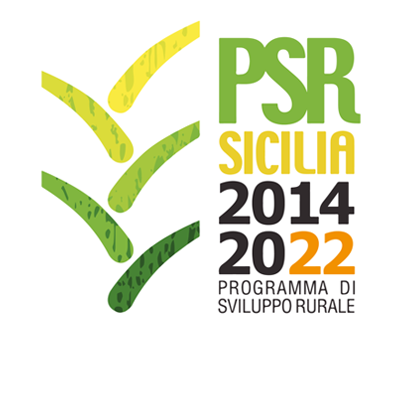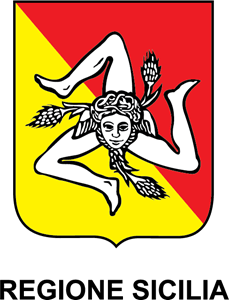Dairy Shorthorn
Country
Specie
ISO3
ZAF
Language
eng.
Transboundary name
Dairy Shorthorn
Breed classification (geographic)
International
Color comments
uni coloured: red, white and roan <br>multi coloured: red and white
Number of horns males
2
Number of horns females
2
Horn shape size and comments
small
Herdbook
y
Domestication status
domestic
Taxonomic classification
Breed
Description of origin
The breed was imported from north-eastern England. It originated from Holderness and Teeswater.
Year of origin
1861
Location within country
Northern KwaZulu-Natal, Eastern Cape and North-western Provinces
Local cryo conservation status
No Material
Local Risk
At Risk
Detailed local risk status
Critical
International Transboundary Risk detailed
Vulnerable
Chianina
Country
Specie
ISO3
ZAF
Language
it.
Transboundary name
Chianina
Breed classification (geographic)
International
Color comments
uni coloured: white with black points and mucosae
Number of horns males
0
Number of horns females
0
Herdbook
n
Domestication status
domestic
Taxonomic classification
Breed
Description of origin
The breed originates from Chiana valley, Tuscany, Italy. Recent import.
Local cryo conservation status
No Material
Local Risk
At Risk
Detailed local risk status
Endangered
International Transboundary Risk detailed
Not at Risk
Charolais
Country
Specie
ISO3
ZAF
Language
eng.
Transboundary name
Charolais
Breed classification (geographic)
International
Color comments
uni coloured: white
Number of horns males
0
Number of horns females
0
Weight females
603.00
Herdbook
y
Herdbook established
1966
Domestication status
domestic
Taxonomic classification
Breed
Description of origin
imported in 1955 from France
Year of origin
1955
Location within country
northern KwaZulu-Natal, Free State, North-west and Western Provinces
Local cryo conservation status
No Material
Local Risk
At Risk
Detailed local risk status
Endangered
International Transboundary Risk detailed
Not at Risk
Charbray
Country
Specie
ISO3
ZAF
Transboundary name
Charbray
Breed classification (geographic)
International
Number of horns males
0
Number of horns females
0
Domestication status
domestic
Taxonomic classification
Breed
Description of origin
Developed breed
Local cryo conservation status
No Material
Local Risk
At Risk
Detailed local risk status
Critical
International Transboundary Risk detailed
Not at Risk
Braunvieh
Country
Specie
ISO3
ZAF
Language
ger.
Transboundary name
Brown Swiss
Other name
Bruin Switser, Brown Swiss
Breed classification (geographic)
International
Adaptability to specific environment
The breed is known for its good walking ability.
Color comments
uni coloured: brown
Number of horns males
2
Number of horns females
2
Wither height males
127
Weight males
1110.00
Weight females
735.00
Herdbook
y
Herdbook established
1954
Domestication status
domestic
Taxonomic classification
Breed
Description of origin
imported from Switzerland; descended from Swiss, Austrian and German imports
Year of origin
1907
Import
1907 from Brown Swiss from Switzerland
Location within country
Free State, Northern Cape, Northern, North-western and KwaZulu-Natal Provinces
Local cryo conservation status
No Material
Local Risk
At Risk
Detailed local risk status
Endangered
International Transboundary Risk detailed
Not at Risk
Brangus
Country
Specie
ISO3
ZAF
Language
eng.
Transboundary name
Brangus
Breed classification (geographic)
International
Specific reproductive characteristic
Females of this breed have the capacity to carry and deliver calves of almost any bull breed without calving difficulties.
Color comments
uni coloured: black, dark brown, red
Number of horns males
0
Number of horns females
0
Wither height males
122
Weight females
498.00
Herdbook
y
Herdbook established
1986
Domestication status
domestic
Taxonomic classification
Breed
Description of origin
composite of Brahman (3/8) and Aberdeen-Angus (5/8) developed in the United States of America: imported from United States of America in 1963:
Year of origin
1932
Location within country
mainly KwaZulu-Natal, North-west and Free State provinces, spreading into northern and eastern Cape Provinces
Local cryo conservation status
No Material
Local Risk
Not at Risk
Detailed local risk status
Not at Risk
International Transboundary Risk detailed
Not at Risk
Brahman
Country
Specie
ISO3
ZAF
Language
eng.
Transboundary name
Brahman
Other name
American Brahman
Breed classification (geographic)
International
Adaptability to specific environment
The breed is reported to be tolerant to heat.
Specific reproductive characteristic
The animals are known for the ease of calving.
Reference for special qualities
FAO Breed Survey
Color comments
uni coloured: usually silver grey, sometimes red-brown
Number of horns males
2
Number of horns females
2
Wither height males
125
Weight females
500.00
Other specific visible traits
Zebu type
Herdbook
y
Herdbook established
1957
Domestication status
domestic
Taxonomic classification
Breed
Description of origin
imported from USA; The Brahman was developed in the United States of America from Guzerat, Gir, Nelore and Krishna River Valley breeds which originated in India.
Year of origin
1954
Location within country
northern and north cape provinces, scattered in the southern cape province
Local cryo conservation status
Sufficient
Local Risk
Not at Risk
Detailed local risk status
Not at Risk
International Transboundary Risk detailed
Not at Risk
Braford
Country
Specie
ISO3
ZAF
Language
eng.
Transboundary name
Braford
Other name
SA Braford
Breed classification (geographic)
International
Number of horns males
0
Number of horns females
0
Herdbook
y
Herdbook established
1998
Domestication status
domestic
Taxonomic classification
Breed
Description of origin
Composite breed. Also Hereford x Afrikaner accepted.
Year of origin
1998
Local cryo conservation status
No Material
Local Risk
Not at Risk
Detailed local risk status
Not at Risk
International Transboundary Risk detailed
Not at Risk
Bovelder
Country
Specie
ISO3
ZAF
Breed classification (geographic)
Local
Number of horns males
0
Number of horns females
0
Domestication status
domestic
Taxonomic classification
Breed
Description of origin
The breed has been newly developed by Johannesburg Municipality Animal Scientist and consultants Roger Wood, Alistair Paterson and Geof Harwin. Landrace composite.
Local cryo conservation status
No Material
Local Risk
Unknown
Detailed local risk status
Unknown
Boran
Country
Specie
ISO3
ZAF
Language
eng.
Transboundary name
Boran
Breed classification (geographic)
International
Color comments
uni coloured: mainly white or grey, also red or pied
Number of horns males
2
Number of horns females
2
Horn shape size and comments
short, round in cross section, upright and thick at base
Other specific visible traits
East African short-horned Zebu-type
Herdbook
y
Herdbook established
1994
Domestication status
domestic
Taxonomic classification
Breed
Description of origin
recently imported from Kenya (1994) and Zambia (1995)
Year of origin
1994
Location within country
KwaZulu-Natal
Local cryo conservation status
Sufficient
Local Risk
Not at Risk
Detailed local risk status
Not at Risk
International Transboundary Risk detailed
Not at Risk




